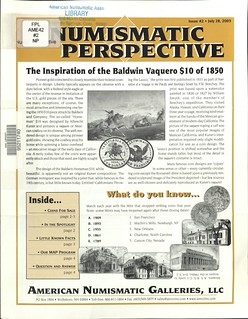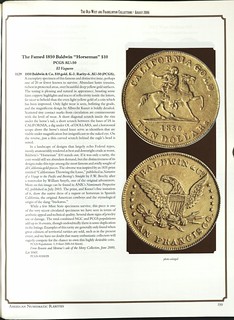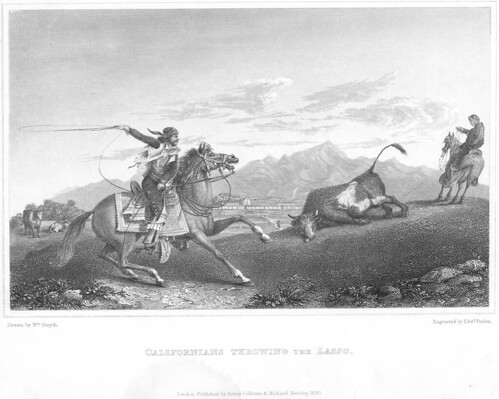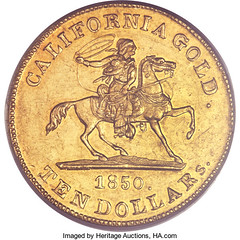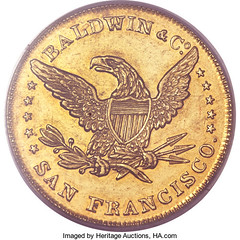
PREV ARTICLE
NEXT ARTICLE
FULL ISSUE
PREV FULL ISSUE
THE INSPIRATION FOR THE BALDWIN VAQUERO $10Cary Bown has some questions for our readers on the Baldwin Vaquero $10 of 1850. Can anyone help? -Editor In the Issue #2 July 2003 of the fixed price list Numismatic Perspective issued by American Numismatic Galleries, LLC, the lead article, titled The Inspiration of the Baldwin Vaquero $10 of 1850, the author (at the time of publication, Q. David Bowers was associated with American Numismatic Galleries, LLC) asserts that the inspiration for Albert Kuner's design of the coin's obverse originated from a print titled "Californians Throwing the Lasso" credited to Wm. Smyth, which was first contained in F.W. Beechey's book Narrative of a Voyage to the Pacific and Beering's Strait to Cooperate with the Polar Expeditions... published in 1831 by Colburn and Bentley in London. In this article, the author states that the print "while famous in the 19th century, is but little known today". Near contemporaneously (to the best of my recollection), there was another article (perhaps an auction catalog description or advertisement) that took a detailed look at the print and made a comparison to the coin's obverse and concluded that there was on the order of (I'm paraphrasing here) "30 points of congruence" between the print and the coin (noting the number of loops in the horse's tack, number of buttons on the vaquero's clothing, etc.). Since that time, this association has become well accepted in the numismatic community with at least a couple of auction catalog descriptions noting the association (The Old West and Franklin Collections - August 2006, and more recently Heritage Auction April 2014, CNS Chicago). My questions:
Any answers to those questions, or any related information on the Smyth-Kuner association, is most appreciated and my apologies to anyone to whom these questions have already been posed if I have not allowed sufficient time to respond before enlisting the aid of the wider numismatic community.
To read the complete Heritage lot description, see:
Wayne Homren, Editor The Numismatic Bibliomania Society is a non-profit organization promoting numismatic literature. See our web site at coinbooks.org. To submit items for publication in The E-Sylum, write to the Editor at this address: whomren@gmail.com To subscribe go to: https://my.binhost.com/lists/listinfo/esylum All Rights Reserved. NBS Home Page Contact the NBS webmaster 
|
